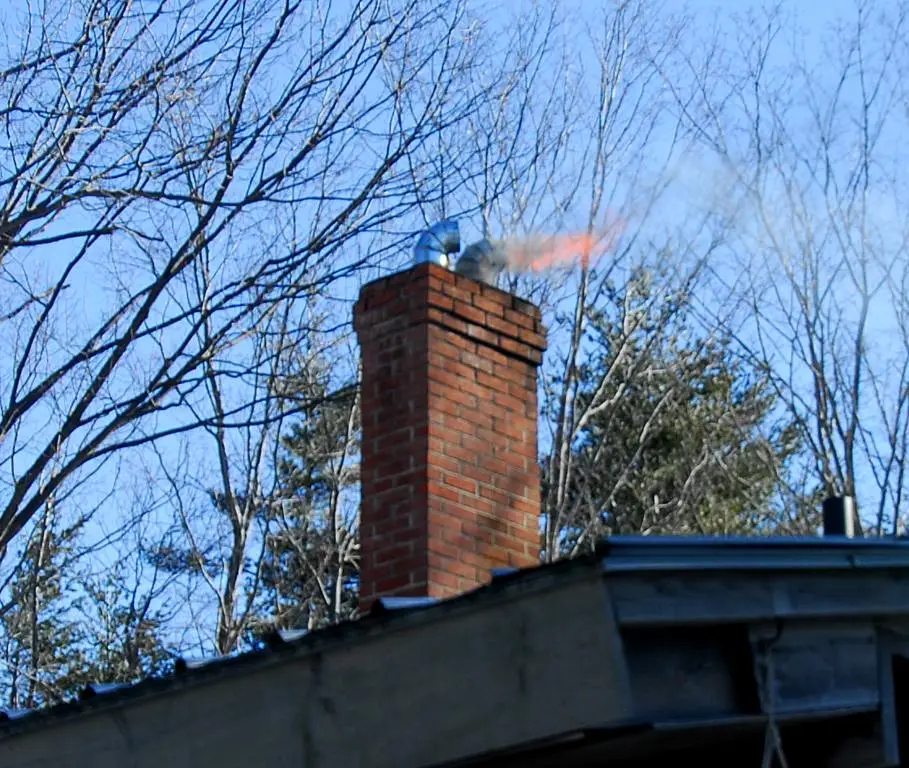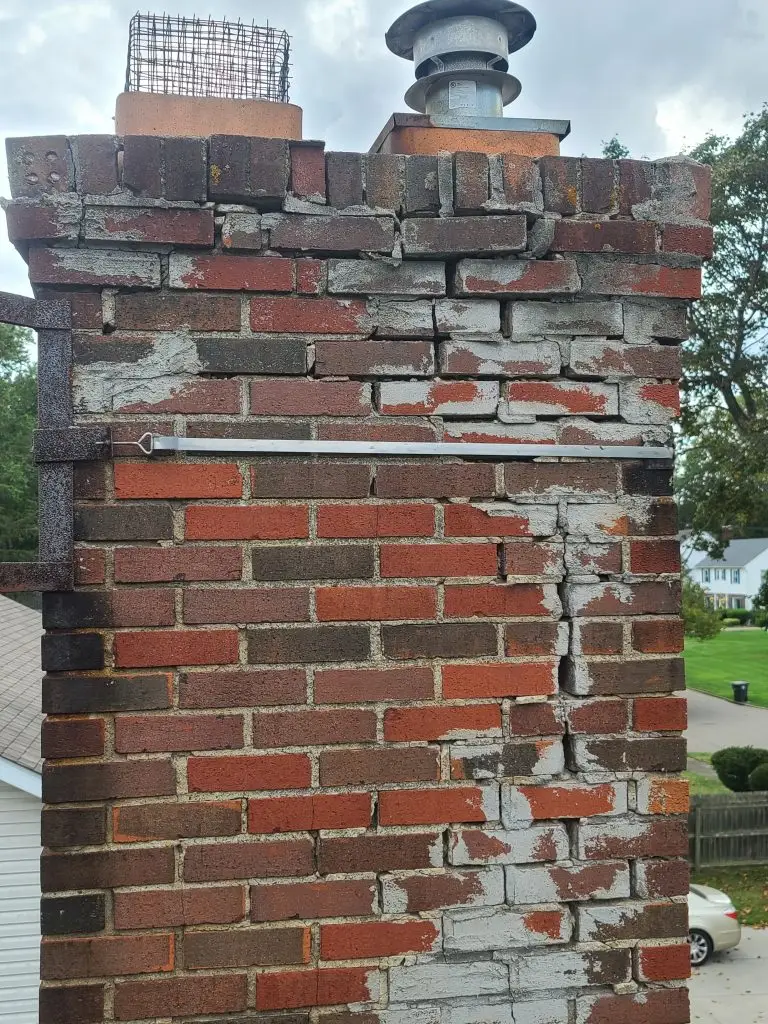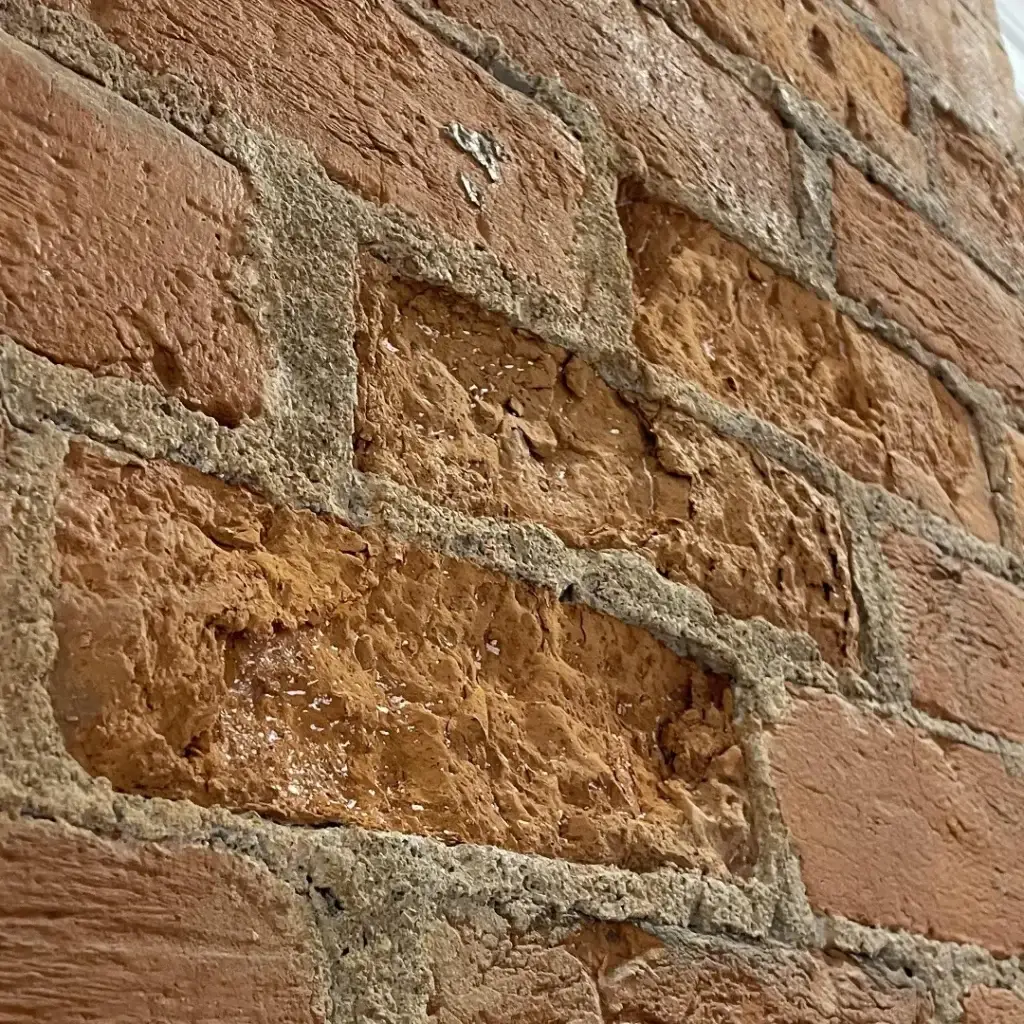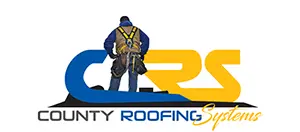Chimney Installation, Repair, and Maintenance for Your Long Island Home
Over 35 Years as a Roofer in Long Island
A well-maintained and well-installed chimney is more than just a charming architectural feature. It’s essential for the safety, efficiency, and comfort of your home. Whether you’re looking to install a new chimney, repair an existing one, or simply keep up with regular maintenance, County Roofing Systems can help. Our chimney installation experts have installed, maintained, and repaired chimneys for homeowners across Long Island.
To keep your home and family safe, we’ve shared our expert insights, practical tips, and best chimney practices for Long Island homeowners. We give you knowledge you need to make sure your chimney remains safe, efficient, and beautiful for years to come.
Why Chimney Maintenance Matters
Chimney maintenance is critically important, especially when dealing with Long Island’s seasonal changes. Our humid summers and harsh winters presents specific challenges for chimney upkeep. From moisture damage and freezing temperatures to salt air corrosion near the coast, all these environmental changes can accelerate wear and tear on your chimney. Proper maintenance ensures the safety of your household and enhances the efficiency of your heating system.
Ignoring chimney upkeep can lead to serious hazards and unexpected expenses down the line. A neglected chimney can pose several dangers that affect both your home and your family’s well being.
Chimney Fire Hazards

Over time, creosote—a highly flammable byproduct of burning wood—accumulates on the inner walls of your chimney. Even a small layer of creosote can ignite, leading to a dangerous fire that may spread to the rest of your home. Regular cleaning removes this buildup, reducing the risk of a catastrophic event.
Carbon Monoxide
A blocked or damaged chimney can prevent smoke and gases from properly venting out of your home. This obstruction can cause carbon monoxide, an odorless and colorless gas, to build up indoors. Carbon monoxide poisoning can result in symptoms ranging from headaches and dizziness to, in severe cases, death. Ensuring your chimney is clear and functioning correctly protects your family from this silent threat.
Structural Damage and Collapse
A poorly maintained chimney can drastically reduce your fireplace’s efficiency. Blockages and structural issues impede the proper flow of air, causing your heating system to work harder than necessary. This leads to higher energy bills and a less comfortable home environment. Regular maintenance keeps your system running optimally, saving you money on utility costs.
Pest Infestations
An uncapped or damaged chimney can become an entry point for pests such as birds, squirrels, and raccoons. These animals can build nests that block airflow and introduce parasites or diseases into your home. Proper maintenance includes installing or repairing chimney caps to prevent unwanted guests.
What's Involved in Chimney Maintenance
Comprehensive Inspection
The first step in chimney maintenance is a thorough inspection. We examine both the interior and exterior components to identify any issues. Our chimney specialists check the chimney’s exterior for cracks, loose bricks, or damaged mortar joints. They also look for signs of weathering or structural weaknesses that could compromise safety.
Inside the chimney, our technicians inspect the flue lining for cracks, corrosion, or buildup of creosote. They use specialized cameras to get a detailed view of hard-to-reach areas. We go up on the roof to ensure that the chimney cap is intact and free of obstructions. We also examine the flashing—the metal sealing between the chimney and roof—to prevent water leaks.
Cleaning and Creosote Removal
Using professional-grade brushes and rods, we sweep the chimney flue to dislodge soot and creosote. This reduces the risk of chimney fires and improves airflow. We clear out any debris such as leaves, twigs, or animal nests. Blockages can prevent proper ventilation and increase the risk of carbon monoxide buildup.
We also clean the firebox—the area where the fire burns—and the damper, which controls airflow. Removing ash and soot from these areas enhances fireplace efficiency.
Repair and Restoration
If we find any issues, we proceed with necessary repairs to restore the chimney’s integrity. For damaged mortar joints, we replace the old mortar with new mortar to strengthen the structure. We fix or replace any cracked or missing bricks. If the flue lining is damaged, we may recommend relining. Installing a new stainless steel or ceramic liner ensures safe venting of smoke and gases.
A damaged or missing chimney cap allows water, debris, and animals to enter. The contractor repairs or replaces it to protect the chimney’s interior. If the flashing is compromised, they reseal or replace it to prevent water from seeping into your home’s structure.
Flashing Repair
If we find any issues, we proceed with necessary repairs to restore the chimney’s integrity. For damaged mortar joints, we replace the old mortar with new mortar to strengthen the structure. We fix or replace any cracked or missing bricks. If the flue lining is damaged, we may recommend relining. Installing a new stainless steel or ceramic liner ensures safe venting of smoke and gases.
A damaged or missing chimney cap allows water, debris, and animals to enter. The contractor repairs or replaces it to protect the chimney’s interior. If the flashing is compromised, they reseal or replace it to prevent water from seeping into your home’s structure.
Preventative Maintenance and Upgrades
Beyond repairs, chimney maintenance includes implementing measures to prevent future issues. We apply a waterproof sealant to the chimney’s exterior prevents moisture penetration. This step is crucial in Long Island’s wet and cold climate. For chimneys located on the lower side of a sloped roof, we might install a chimney cricket—a small peaked structure that diverts water away from the chimney.
Final Safety Checks
After cleaning and repairs, we run some final checks to ensure everything is in optimal condition. We test the chimney’s draft to confirm that smoke and gases are exiting properly. This is vital to ensure fireplace performance and indoor air quality. We make sure that the damper opens and closes smoothly and that all other mechanical components are operating as they should. Finally, we provide you with a comprehensive report outlining the work performed, any remaining concerns, and recommendations for future maintenance.
County Roofing Handles
Chimney Maintenance
We understand how Long Island’s seasonal weather patterns affect chimney structures and can provide targeted solutions. Our certified technicians conduct thorough inspections using advanced equipment. We assess every component of your chimney, from the flue lining to the exterior masonry. This detailed approach helps us identify and address issues that might be missed by a less experienced chimney contractor.
Because we know your safety is on the line, we use only top-grade materials and adhere to the highest standards of workmanship. Our chimney repairs and installations are durable and reliable. We get the job done right the first time so you don’t have to worry about dangerous and costly mistakes.

The Steps of Chimney Installation
Installing a chimney is a complex process that requires professional expertise. In Long Island, specific local codes, HOA rules, and weather considerations make proper installation even more crucial. Understanding the steps involved can help you appreciate the value of hiring experienced chimney contractors like County Roofing Systems.
Initial Consultation and Planning
The first step is a detailed consultation to assess your needs. Our experts examine your home’s design to determine the best location for the chimney installation. We consider factors like room layout, roof structure, and existing ventilation systems. We offer various materials such as brick, stone, or metal. Each material has unique benefits, and we’ll help you choose the one that fits your aesthetic and functional preferences.
Long Island has specific building regulations. We ensure your chimney installation meets all local codes and HOA restriction, so you can avoid future legal issues or fines.
Designing the Chimney System
Our team designs a chimney that complements your home’s architecture. We use advanced software to create precise plans, ensuring accuracy in every detail. Correct chimney height and width are vital for optimal draft and safety. We perform precise calculations to ensure efficient operation. The chimney liner protects your home from heat and corrosion. We help you choose the best liner material, such as stainless steel or clay tile, based on your heating needs.
Preparing the Chimney Installation
Proper preparation sets the foundation for a successful installation. We handle all the paperwork to obtain the required building permits. This step ensures the project proceeds without legal hurdles.
Our team marks the chimney installation path and ensures structural support. Inside, we protect your home by setting up barriers to contain dust and debris. Safety is our top priority. We set up scaffolding and use protective gear to safeguard both our workers and your property.
Chimney Construction and Installation
The actual chimney installation involves several critical steps.
Building the Chimney Structure
We construct the chimney from the ground up using high-quality materials. Our masons lay bricks or stones meticulously to ensure structural integrity.
Installing the Flue Liner
The flue liner is installed carefully to ensure proper ventilation. We make sure it’s correctly sized and securely fitted.
Adding Insulation
Proper insulation improves efficiency and safety. We add insulation where necessary to prevent heat transfer to combustible materials.
Installing the Chimney Cap and Crown
A chimney cap prevents rain, debris, and animals from entering. We install a durable cap and crown to protect the chimney’s interior.
Integration with the Fireplace or Heating System
We ensure airtight connections between the chimney and your fireplace or furnace. This step prevents smoke and gases from leaking into your home.
Our team tests the chimney’s draft to confirm that smoke rises correctly. Proper draft ensures efficient operation and reduces creosote buildup. We perform final checks to ensure the entire system meets all safety regulations. Your family’s safety is our ultimate goal.
Final Inspection and Cleanup
Once your chimney installation is complete, we wrap up the project professionally. We inspect every aspect of the chimney to verify quality workmanship. This includes checking the masonry, liners, and all connections.
We walk you through the features of your new chimney. Our team provides maintenance tips to help you keep it in excellent condition. And because respecting your home is important to us, we remove all debris and leave the work area spotless.
Common Long Island Chimney Repair Issues
Cracked or Deteriorating Masonry

The freeze-thaw cycle in Long Island can wreak havoc on chimney masonry. Water seeps into small cracks in the bricks and mortar. When temperatures drop, this water freezes and expands, causing the cracks to widen.
- Signs to Watch For: Visible cracks, loose bricks, or crumbling mortar joints indicate masonry deterioration.
- Risks Involved: Structural weakness can lead to chimney collapse or falling debris, posing safety hazards.
- Solution: A chimney repair specialist can perform tuckpointing to replace damaged mortar and reinforce the structure.
Chimney Leaks and Water Damage
Heavy rainfall and coastal humidity contribute to chimney leaks. Water penetration can cause extensive damage to both the chimney and the interior of your home.
- Signs to Watch For: Stains on walls or ceilings near the chimney, dampness in the firebox, or a musty odor.
- Risks Involved: Moisture can deteriorate masonry, rust metal components, and promote mold growth.
- Solution: A chimney repair specialist can perform tuckpointing to replace damaged mortar and reinforce the structure.
Creosote Buildup
Heavy rainfall and coastal humidity contribute to chimney leaks. Water penetration can cause extensive damage to both the chimney and the interior of your home.
- Signs to Watch For: Stains on walls or ceilings near the chimney, dampness in the firebox, or a musty odor.
- Risks Involved: Moisture can deteriorate masonry, rust metal components, and promote mold growth.
- Solution: A chimney repair specialist can perform tuckpointing to replace damaged mortar and reinforce the structure.
Damaged or Missing Chimney Caps
Chimney caps protect the chimney from rain, debris, and animal intrusion. In Long Island’s stormy weather, caps can become damaged or dislodged.
- Signs to Watch For: Water in the firebox, animal noises, or debris falling into the fireplace.
- Risks Involved: Without a cap, your chimney is vulnerable to water damage, blockages, and pest infestations.
- Solution: Installing a new chimney cap prevents these issues and extends the chimney’s lifespan.
Flue Blockages
Blockages in the chimney flue hinder proper ventilation. Common causes include debris, animal nests, or structural damage.
- Signs to Watch For: Smoke entering your home, poor fireplace performance, or unusual smells.
- Risks Involved: Blocked flues can lead to carbon monoxide buildup, posing serious health risks.
- Solution: A chimney repair specialist can remove obstructions and repair any structural issues causing blockages.
Chimney Settling or Leaning
Soil conditions and foundational issues can cause chimneys to lean or separate from the house. This problem is more prevalent in older Long Island homes.
- Signs to Watch For: Visible tilting of the chimney, cracks where the chimney meets the house, or gaps forming.
- Risks Involved: A leaning chimney is a significant safety hazard and may collapse without warning.
- Solution: Professional assessment and reconstruction may be necessary to stabilize the chimney.
Flashing Issues
Flashing seals the gap between the chimney and roof. Over time, flashing can deteriorate due to weather exposure.
- Signs to Watch For: Leaks around the chimney, water stains on ceilings, or visible damage to the flashing.
- Risks Involved: Damaged flashing allows water to enter your home, leading to structural damage and mold growth.
- Solution: Repairing or replacing flashing prevents leaks and protects your home’s interior.
Spalling Bricks

Spalling occurs when water penetrates brick surfaces, causing them to flake or peel. This issue is common in areas with high moisture levels like Long Island.
- Signs to Watch For: Chipped bricks, flaking surfaces, or bricks falling from the chimney.
- Risks Involved: Spalling weakens the chimney’s structural integrity, increasing the risk of collapse.
- Solution: Replacing damaged bricks and applying a waterproof sealant can resolve spalling issues.
Animal Infestation
Chimneys offer a warm, sheltered environment for animals. Birds, squirrels, and raccoons often take up residence in unused chimneys.
- Signs to Watch For: Scratching noises, animal droppings, or nesting materials in the fireplace.
- Risks Involved: Animals can block the flue, cause foul odors, and introduce pests or diseases into your home.
- Solution: A chimney specialist can safely remove animals and install caps or screens to prevent future infestations.
Choosing the Right
Chimney Contractor

With over 35 years of experience, County Roofing Systems has earned a reputation as one of Long Island’s leading chimney contractors. We’ve performed chimney installation, repair, and maintenance across the Island and in the NYC metro area.
Our team of certified professionals understand the unique challenges posed by Long Island’s climate. By using top-grade materials and adhering to local building codes, we provide solutions that withstand harsh weather conditions.
From the start of your chimney project through its completion, we keep you informed about what is going on. We give you a clear, detailed proposal that lists all materials, parts, labor, licensing and permit fees, and miscellaneous costs. We never leave you in the dark.
If you want a new chimney or you need work on your current chimney, give us a call. We have many happy customers who will be happy to recommend us and share their stories with you.
People Also Ask...
In over 3 decades of contracting work on Long Island, we’ve worked with many local lenders. Give us a call and we can give you that beautiful new chimney you’ve been dreaming of.
